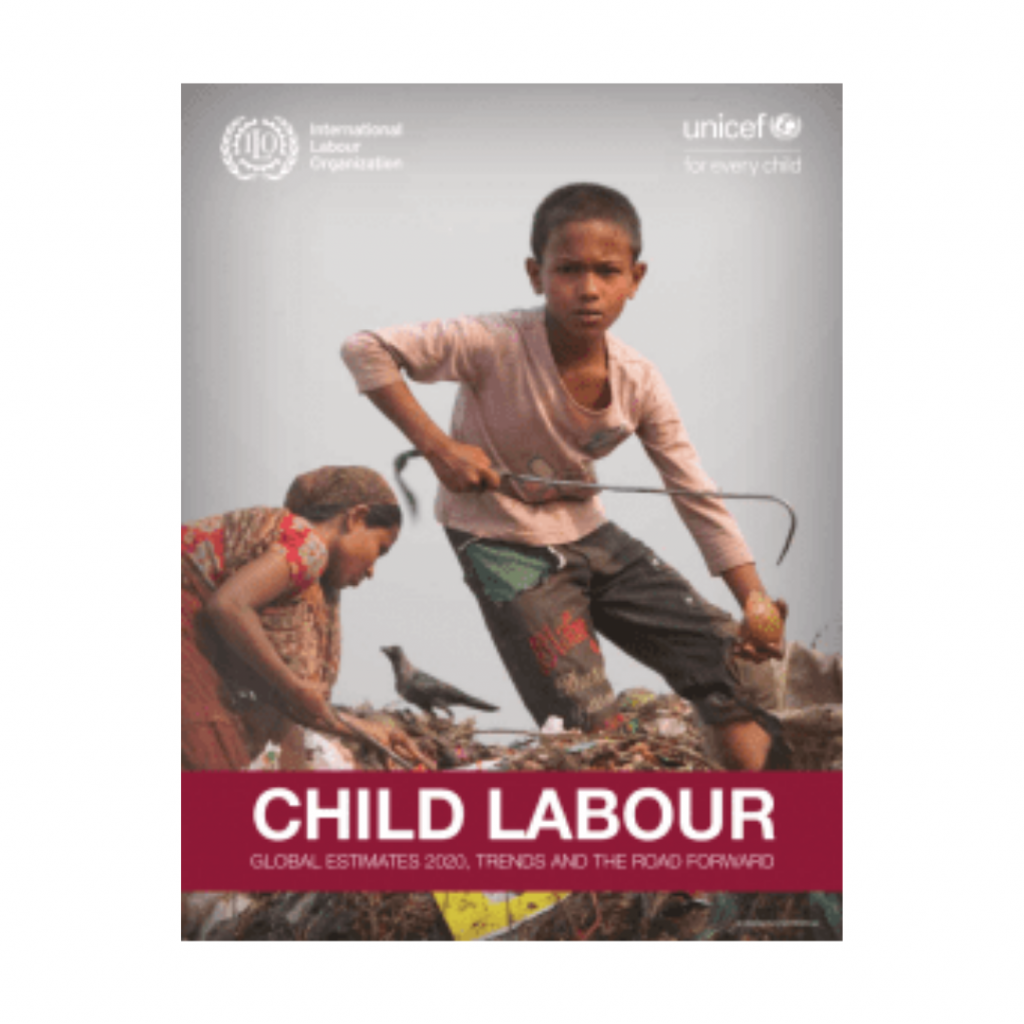160+ million children are in
Child Labour

Child Work – work that ‘make useful, positive, contributions to a child’s development, helping them learn useful skills. Often, work is a vital source of income for their families.’
Child Labour – deprives children of their childhood, hindering their development, health and education. Child labour is common when the child is in the care of their parents.
Hazardous Work – described as work that is ‘irreversibly damaging children’s health and development through, for example, exposure to dangerous machinery or toxic substances, and may even endanger their lives.’
The worst forms of child labour, including hazardous work, are considered to be forms of modern slavery.
Child labour has increased for the first time in 20 years:
Over the past four years, child labour has increased by 8.4 million. This is the first time that the prevalence of child labour has increased in twenty years. Today, 1 in 10 (160+ million) children are in child labour globally.
“70% of child labour is in agriculture and more than two-thirds is family-based. Today, tens of millions of family farms are functionally dependent on child labour. It is a structural problem in the rural economies of many countries and supply chains, domestic and global.” (International Labour Organisation).
Poverty, limited choices for children, lack of education, economic imbalances, hardships, unstable social and familial conditions are some of the driving factors behind child labour. Migrant and refugee children who have had their livelihoods uprooted are at a greater risk of engaging in child labour.
Child labour can result in extreme physical and psychological damage, distress and even death. Children are denied an education, healthcare, stripped of their fundamental human rights, destroying their futures, inhibiting their development and robbing them of their childhood. As child labour prevents children from obtaining the basic education and skills to seek decent work, they are at risk of being trapped in a vicious, generational cycle of poverty.
Impact of COVID-19:
“The COVID-19 crisis threatens to further erode progress. Child labour could rise by a further 8.9 million by the end of 2022 due to the effects of school closures and exacerbation of poverty as a result of the crisis. Young children aged 5 to 11 years account for over half of the predicted rise.
Governments will need to adopt creative resource mobilisation strategies to meet our shared goal of ending child labour by 2025. The international community will need to fill in the financing gaps. Many countries fall short of meeting their official commitments. Debt relief should also be extended in heavily indebted countries, so social spending on children is not crowded out by debt services payments.” (International Labour Organisation).

Want to read more? Check this out:
Child Labour: Global Estimates 2020, Trends & the Road Forward
International Labour Organisation & UNICEF
